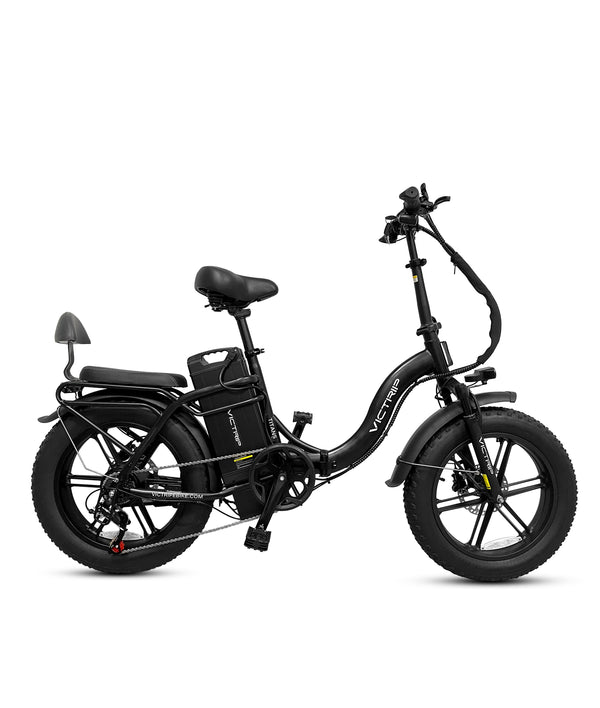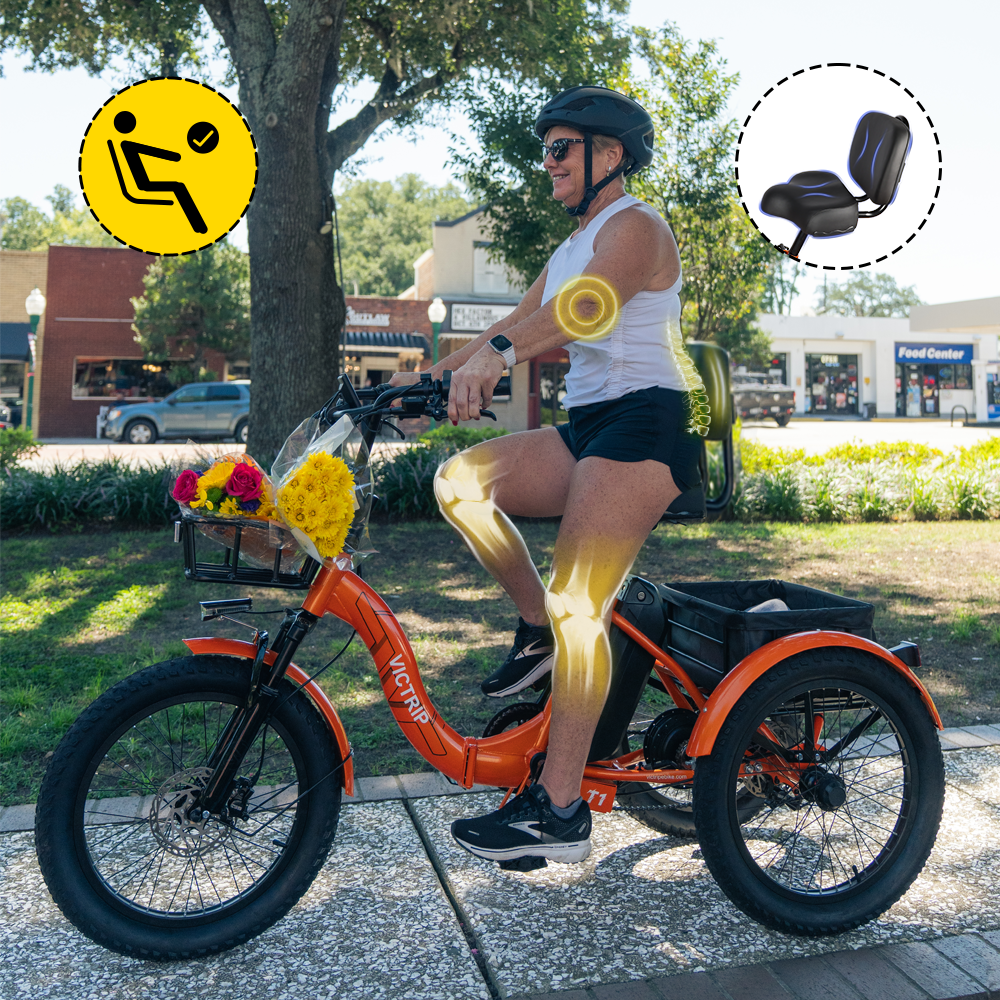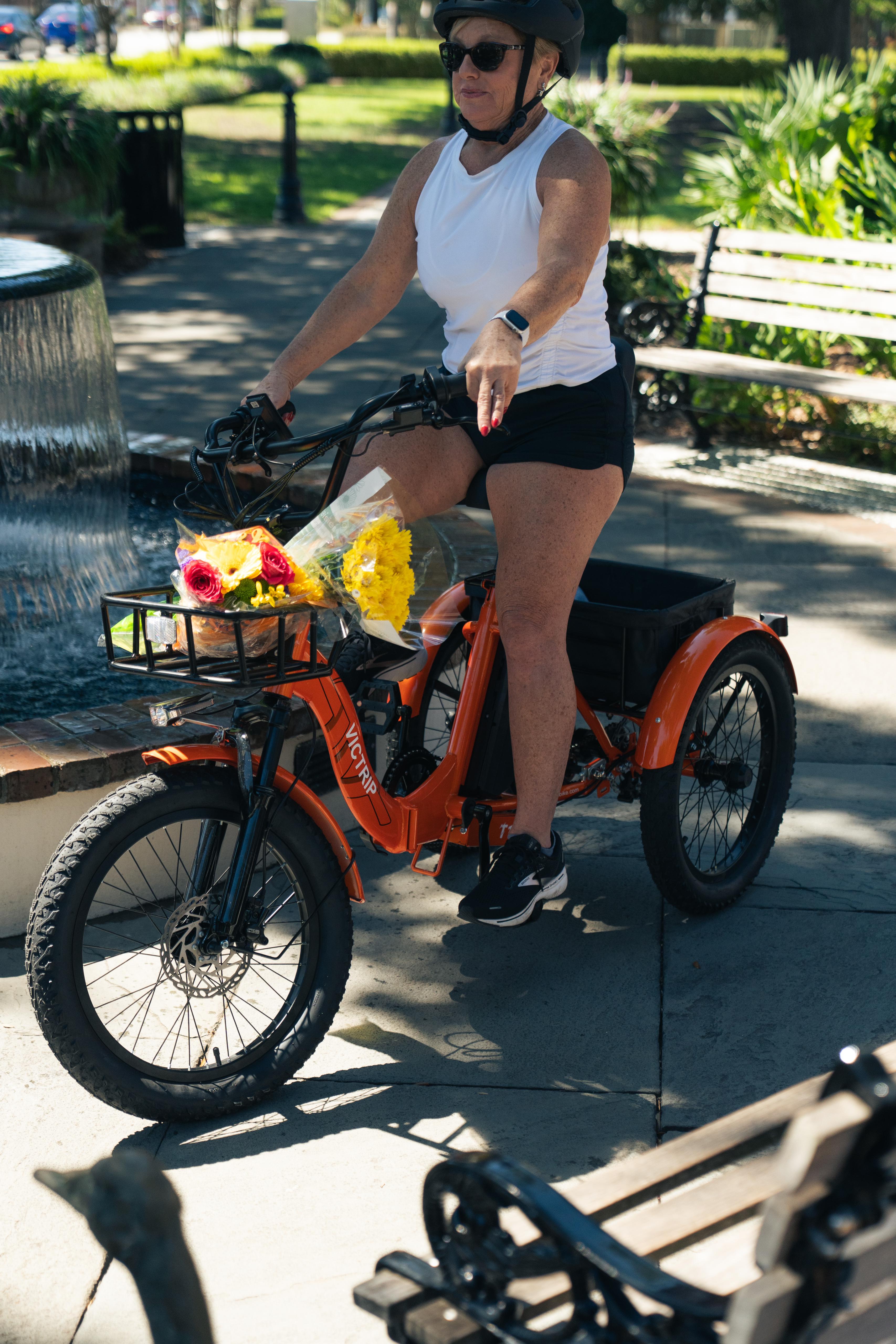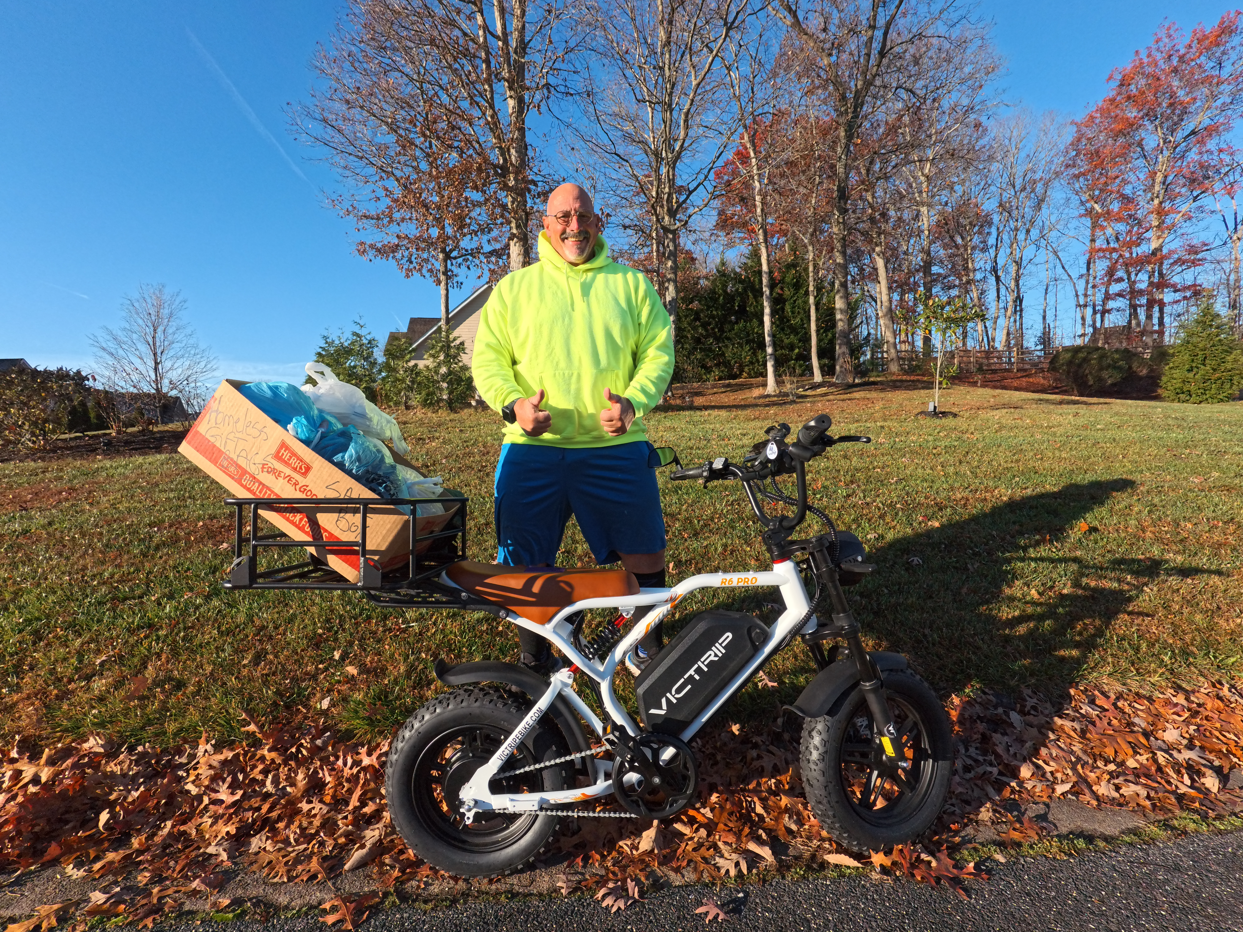
Choosing the right size electric bike matters more than many buyers think. Whether you're commuting, running errands, or exploring trails, a properly sized e-bike improves comfort, safety, and efficiency. In this guide you'll get clear, step-by-step advice to measure yourself, understand frame geometry, pick wheel size, test ride like a pro, and make adjustments so your new e-bike fits you — not the other way around. We'll use plain language, helpful checklists, and practical tips so you can feel confident when you buy.
Why fit matters for women
A correctly sized e-bike affects five big things: comfort, pedaling efficiency, balance, safety, and long-term health. Women often have different proportions than unisex sizing assumes: relatively shorter torsos or legs, narrower shoulders, or different hip geometry. If the bike's frame is too large, you’ll struggle to handle the bike at low speed, find it uncomfortable to reach the handlebars, and risk knee or back pain. If it's too small, pedaling becomes inefficient and stability may suffer. So, fit isn't just vanity — it's performance and safety.
Quick checklist before you start
Before you measure or visit a shop, have this short checklist ready:
-
Purpose: commuting, leisure, off-road, cargo, or mixed use.
-
Typical ride length and terrain.
-
Clothing and shoe type you usually ride in.
-
Budget range and whether you want local service.
-
Carrying needs (basket, racks, child seat).
Step 1 — Measure yourself: inseam, reach, and flexibility
Accurate measurements are the backbone of choosing frame size.
How to measure inseam:
-
Stand without shoes with feet ~6–8 inches apart.
-
Place a book between your legs, spine up, push it firmly to simulate a saddle.
-
Measure from the top of the book spine to the floor — that's your inseam.
How to measure reach and torso length:
-
Measure from the top of your sternum (where your collarbones meet) to your navel — gives torso length context.
-
To gauge arm reach, measure from the center of your chest to the tip of your middle finger with arm outstretched.
Flexibility matters:
-
If you’re flexible you can handle a slightly longer top tube.
-
If you have limited flexibility, prefer shorter reach and a more upright position.
Tools you need for measurements
-
Soft tape measure (or metre stick).
-
A hardcover book or similar for the inseam test.
-
A friend to help read values.
-
A notepad or phone to record numbers.
Step 2 — Understand frame styles and geometry
Frame types commonly sold to women (or in women-friendly sizes) include:
-
Step-through frames — Easy mount/dismount, great for skirts and frequent stops.
-
Step-over (diamond) frames — Often slightly stiffer and lighter; used for sportier e-bikes.
-
Compact frames — Shorter top tube, low standover, good for mixed-height riders.
Key geometry terms:
-
Top tube (effective): Affects reach.
-
Seat tube (length): Determines standover height.
-
Head tube angle & fork rake: Affect handling.
-
Chainstay length: Influences stability and cargo capacity.
Women’s-specific geometry may include a slightly narrower handlebar, shorter reach, and saddle designed for wider sit bones. But remember: "women’s" labeled components don't replace proper fit measurements.

How women’s-specific geometry differs
Manufacturers sometimes lower step-over height, shorten the top tube, or fit narrower handlebars. These changes are helpful but always verify with measurements and a test ride instead of relying on labels.
Step 3 — Picking wheel size and tyre width
Common wheel sizes and their tradeoffs:
-
26 inch: Nimble, good for shorter riders, strong sidewalls — often used on folding and compact e-bikes.
-
27.5 inch (650b): Balance of agility and rollover ability.
-
700c / 28 inch: Great for long rides and higher speeds; typical of commuter and road-style e-bikes.
Tyre width:
-
Narrow tyres (28–35 mm) on commuter e-bikes for speed.
-
Wider tyres (40–2.2") for comfort and mixed terrain.
For many women, a 27.5" or 700c wheel paired with the right frame size gives the best mix of comfort and efficiency. If you're shorter (under ~5'2"), consider 26" or compact frames.
Step 4 — Matching motor type & battery to use
Motor placement affects weight distribution and handling:
-
Hub motors (front or rear): Simpler and often cheaper; can feel less natural on climbs.
-
Mid-drive motors: Centralized weight, better for climbing and long rides, often pricier.
Read More: Hub Drive vs Mid Drive: Which eBike Motor Is Better?
Battery size (watt-hours, Wh):
-
Estimate range roughly: 20–30 Wh per mile for mixed riding. So a 500 Wh battery often yields 15–25 miles of active assisted riding depending on level and terrain.
-
Consider whether you want swap-able batteries if you'll be far from charging.
Pick motor torque and battery capacity based on intended use:
-
City / commuting: 250–500W motor, 400–500 Wh battery.
-
Hilly terrain or heavy cargo: Mid-drive, higher torque (80–90 Nm), 500+ Wh battery.
-
Off-road / long range: 500–750W or peak motors with 600–900 Wh battery.
TOP PICK

VICTRIP®TITAN S 1000W Ebike
$1,499.00
Step 5 — Test ride: what to check
A proper test ride reveals much more than specs. Try to ride at least 10–20 minutes in varied conditions. During the test:
-
Mount and dismount: Is standover height comfortable? You should have 1–3 inches clearance when standing over the frame.
-
Reach: With hands on grips, elbows slightly bent — is it comfortable? No overstretching.
-
Pedal stroke: Knees should track above the pedal spindle without overextending your leg.
-
Handling: Does turning feel stable? Can you balance easily at slow speeds?
-
Power assist: Try different assist levels and note throttle/power smoothness.
-
Brakes: Are brakes progressive and strong enough for motor power?
-
Controls: Can you reach the display and shifters without taking your hand off grips?
Bring the shoes you ride in and wear the same clothes you’ll use when commuting.
Step 6 — Adjustments for comfort
Most fit issues can be corrected with adjustments:
-
Saddle height and fore/aft: A slight bend in the knee at the bottom of pedal stroke is ideal.
-
Saddle type & width: Measure sit bone width and choose a saddle that supports you.
-
Handlebar height & sweep: Use spacers or a different stem for a more upright posture.
-
Stem length: Shorter stems reduce reach; longer stems increase it.
-
Suspension seatpost or fork: Adds comfort if you ride rough roads.
Keep a log: After a week of riding, re-check saddle position and handlebar height — small tweaks yield big gains.
Step 7 — Sizing for special needs
Shorter legs, longer torso, pregnancy, reduced mobility, or stiffness require special attention.
-
Short legs / long torso: Look for bikes with shorter standover and adjustable stem to lengthen reach.
-
Pregnancy: Prioritize step-through frames and an upright posture; consult a physician for safe riding weeks.
-
Mobility issues: Consider trikes, recumbents, or adaptive e-bikes which provide stability and ease of mounting.
-
Cargo & child seats: Account for extended wheelbase and possibly lower standover height for comfort while loading/unloading.
Children, cargo, commuting — size tradeoffs
If you frequently carry a toddler seat or heavy cargo, you may choose a slightly larger frame for stability but compensate with shorter stem and upright bars for comfort. Test the loaded bike before buying if possible.
Common fit mistakes and how to avoid them
-
Relying only on size charts: Charts are starting points — always measure and test ride.
-
Ignoring handlebar width or saddle shape: These small details change comfort dramatically.
-
Buying the biggest frame that “almost fits”: Big frames feel unstable; choose a better matched size.
-
Neglecting test rides in clothing you'll ride in: Different shoes change leg angle.
-
Skipping service plans: E-bikes need calibration and software updates; skip at your peril.
Maintenance & fit over time
Your fit can change due to weight, flexibility, or riding habits. Re-check key fit points every 6–12 months:
-
Saddle height
-
Brake adjustment
-
Tire pressure
-
Torque on stem & handlebars
A yearly tune at a local Ebike shop keeps components safe, and many e-bike manufacturers require periodic checks to keep the warranty valid.
Buying online vs local bike shop
Online:
-
Often lower price and broader selection.
-
Risk: fit guessing; return hassles.
Local shop:
-
Professional fitting, test rides, service network.
-
Higher upfront cost but lower friction when adjustments are needed.
If buying online, verify the return policy and local service options. Ask the seller for geometry numbers and compare them to a bike you already ride comfortably.
Cost, warranty, and accessory checklist
Budget categories:
-
Entry (under $1,500): Basic hub motor, limited battery.
-
Mid ($1,500–$3,500): Mid-drive or better hub motors, decent battery, better components.
-
High-end (>$3,500): Premium mid-drive, longer warranty, higher component quality.
Accessories to budget for:
-
Helmet, lights, lock, panniers, fenders, rack, mirror, saddle upgrade.
-
Professional fitting (if desired).
Warranty tips:
-
Check battery warranty specifically (often 1–2 years).
-
Ask about software updates and motor coverage.
Conclusion: confident sizing decisions
Choosing the correct size electric bike for women blends objective measurements and subjective feel. Measure inseam and reach, understand frame geometry, select a wheel size that suits your height and terrain, and test ride thoroughly. With the right approach you’ll gain comfort, efficiency, and confidence on the road. Remember — a good dealer and one proper fitting session often saves months of discomfort. Now, take your measurements, use this checklist, and find a bike that fits your life.
FAQs
How do I know the right frame size if I'm between sizes?
Choose the smaller size if you prioritize maneuverability and comfort; choose the larger size if you want more stability and longer legroom — but be prepared to adjust stem/seatpost.
Can I change wheel size on an e-bike to improve fit?
Wheel swaps are possible but complex due to motor and brake compatibility. It's better to pick the right wheel size at purchase.
Is a step-through always better for women?
Not always. Step-through is convenient, but step-over frames can be lighter and stiffer. Choose based on mobility and preference.
How high should my saddle be on an e-bike?
Set so there's a slight knee bend at the bottom of the pedal stroke — about 25–35 degrees. Use the inseam measurement and crank arm length to compute a starting point.
Should I get a mid-drive motor or hub motor?
Mid-drive is preferred for hilly terrain and natural-feeling power; hub motors are often cheaper and simpler for flat, city rides.
We recommend for you:
- 1000w Vs 2000w EBike: Which One is Better for You?
- Electric Moped Bike for Students: Fast, Affordable, Eco-Friendly.
- Electric Bicycles With Torque Sensors: Everything You Need to Know.
- 26 Inch EBike for What Size Person? A Complete Guide
- Moped EBike vs Traditional Scooter: Which One Saves You More Money?




Share:
Black Friday 2025: Why Everyone Is Talking About the VICTRIP T1 Tricycle
Best Electric Bike for 400 lb Person: Powerful Rides for Every Body Type